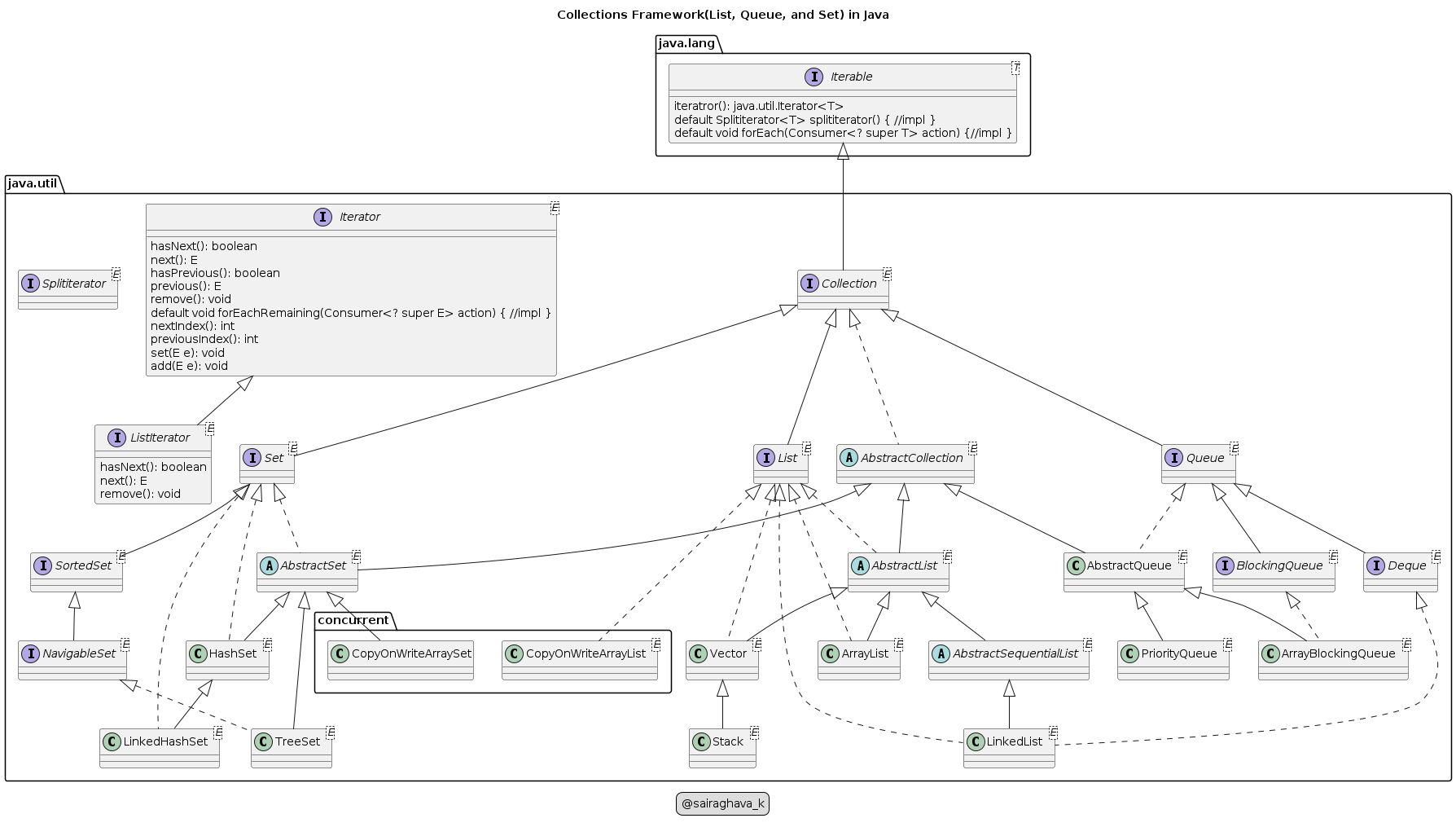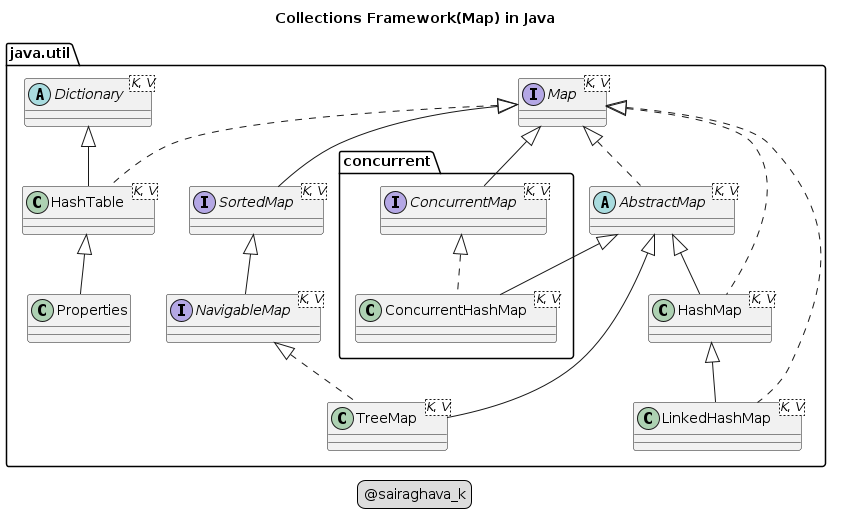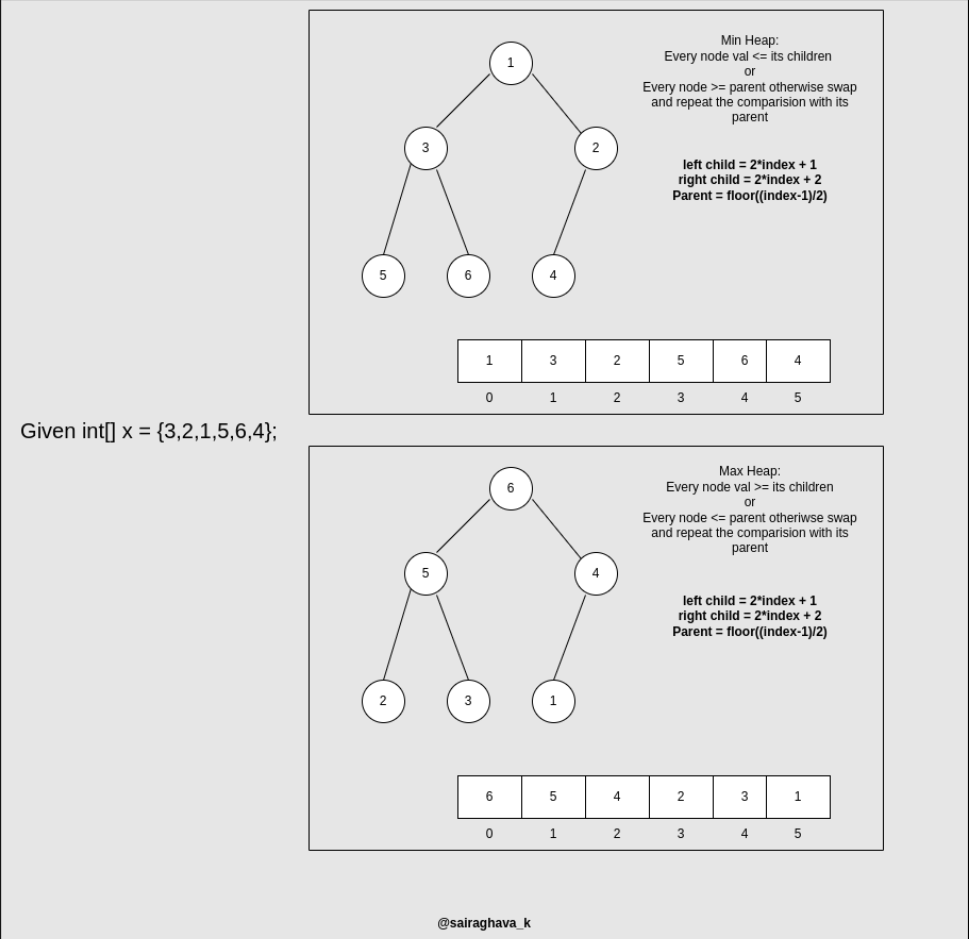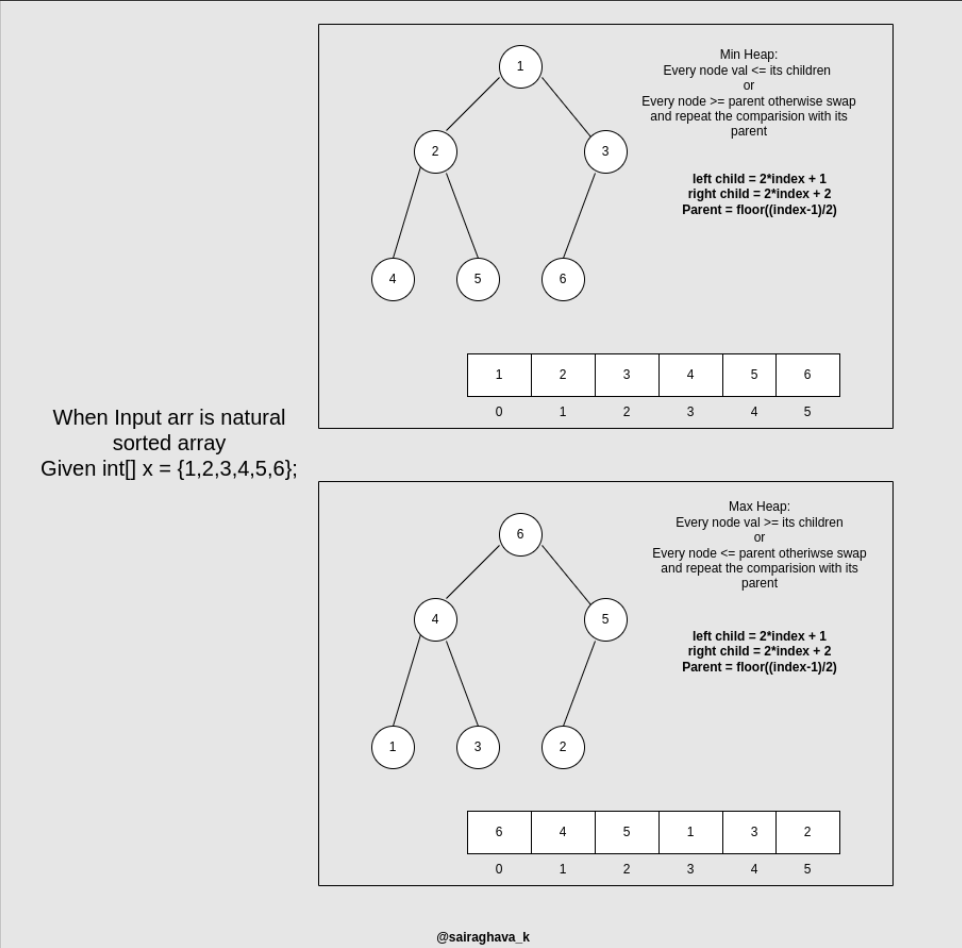Collections Framework in Java - (In Progress)
- Excerpt from Wikipedia
- Abstract Data Type(ADT) - Serves the logical form of the data type - Conceptual idea, semantics, operations - user view
- Few of the common ADT’s are
- List/Sequence
- Set
- Map/Associative Array/Dictionary
- Stack - LIFO - Has top of the stack - operations - push(), peek(), pop()
- Queue - FIFO - Has head and tail - operations - offer(), peek(), poll()
- Deque
- PriorityQueue
- Graph
- Tree
- Data structure - Implements the physical form of the data type - talks about internal implementation of ADT - programmers view
- Array - Contiguous memory allocation of elements
- LinkedList - Each node is an object that is stored at memory. All nodes are scattered across memory but, all are linked with references.
- record/struct
- HashTable - Read my post: Overview of HashTable implementation
- Heap/Binary Heap - Specialized tree-based data structure satisfying the heap property(Min-Heap property or Max-Heap property)
- Often used to implement PriorityQueues for Min-Heap, Max-Heap
- Read Binary Heap
- Worst case time complexity of operations
- insert - O(log n)
- Find-min - O(1)
- Delete-min - O(log n)
-
Think of an ADT as an interface and data structure as an interface(ADT) implementation
List, Queue, and Set
Map
Summary of frequently used Collections
| Throws Exception Fail fast Operation |
Return special value often (true/false) Fail safe Operation |
|
| Insert | add(e) | offer(e) |
| Remove | remove() | poll() |
| Examine | element() | peek() |
Priority Queue
- Priority Queue is an ADT that is implemented by Heap/Binary-Heap Data Structure.
- By default, it stores the data as Min-Heap.
- Does not permit null elements because it expects the elements to implement
ComparableorComparatorso that they are compared and placed in Binary heap structure. - Youtube video: Heap as Tree to Heap as Array
- Topics pertinent to Collections Framework in Java
java.lang.Comparablevsjava.util.Comparatorpublic int compareTo(T o);vsint compare(T o1, T o2);
- equals() and hashCode() contract
java.util.Collectionsstatic utility classjava.util.ConcurrentModificationExceptionuse-casesjava.lang.UnsupportedOperationExpcetionuse-cases- External iteration(iterator and classic for loop, while loop, imperative way) vs internal iteration(for-each, declarative)
java.util.Iteratorvsjava.util.ListIterator- Generics in Java - Purpose, Type erasure
- Capacity vs Size in
java.util.ArrayList - Failfast vs Failsafe Collections
- Synchronized vs Concurrent collections
java.util.Vectorvsjava.util.ArrayListjava.util.concurrent.CopyOnWriteArrayList,java.util.concurrent.ConcurrentHashMap- More reads, less/occasional writesjava.util.Collections.synchronizedList(List<Object> list),java.util.Collections.synchronizedMap(Map<K,V> m)VSjava.util.concurrent.CopyOnWriteArrayList,java.util.concurrent.ConcurrentHashMapjava.util.Hashtablevsjava.util.HashMapjava.util.Stack(LIFO, Synchronized) vsjava.util.Deque(LIFO + FIFO)java.util.PriorityQueuejava.util.concurrent.BlockingQueuejava.util.concurrent.PriorityBlockingQueuejava.util.concurrent.SynchronousQueue
java.util.Collections.emptyList()vsjava.util.Collections.emptyMap()vsjava.util.Collections.emptySet()
PS: Will add little more details. Discussion/Comments will be enabled for this post after it’s updated with details.




